Wood Mouse
- December 19, 2023
- 0 comment
The Wood Mouse, scientifically known as Apodemus sylvaticus, is a small rodent that belongs to the Muridae family. Conflicts involving wood mice often arise in agricultural settings, where they may cause damage to crops and stored grains. Additionally, they may occasionally find their way into homes, leading to conflicts with homeowners due to their tendency to nibble on food supplies and create nests in secluded corners. In terms of legal status, wood mice are generally not protected, and pest control measures are often employed to manage their populations in areas where they pose a threat.

Identifying wood mice can be challenging for the untrained eye, but they typically have a brownish-grey fur coat, large eyes, and large ears. Their bodies are relatively small, ranging from 3 to 4 inches in length, excluding their tails. The tail itself is approximately the same length as their bodies and is covered in a light layer of fur. Understanding their physical characteristics is crucial for implementing effective pest control strategies.
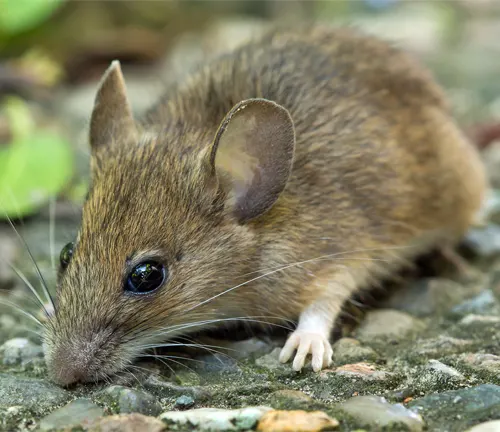
The species range of the Wood Mouse is extensive, spanning across Europe and parts of Asia. They are adaptable creatures that thrive in various habitats, including woodlands, fields, and gardens. Their ability to adapt to different environments contributes to their widespread distribution.
In terms of health and safety concerns, wood mice are not known to transmit diseases directly to humans, but their presence can contribute to allergens and respiratory issues, especially for individuals with allergies. Additionally, their gnawing habits can lead to property damage and pose a fire hazard if they chew on electrical wiring.
| Category | Specification |
|---|---|
| Scientific Name | Apodemus sylvaticus |
| Family | Muridae |
| Size (Body Length) | 3 to 4 inches |
| Size (Tail Length) | Approximately equal to body length |
| Fur Color | Brownish-grey |
| Eyes | Large |
| Ears | Large |
| Tail | Covered in a light layer of fur, equal to body length |
| Habitat | Woodlands, fields, gardens |
| Range | Europe, parts of Asia |
| Legal Status | Generally not protected; subject to pest control measures |
| Conflicts | Agricultural damage, occasional intrusion into homes |
| Health Concerns | Potential allergens, respiratory issues; gnawing habits may cause property damage and fire hazard risk (e.g., chewing on electrical wiring) |
General Biology of the Wood Mouse
The Wood Mouse, scientifically known as Apodemus sylvaticus, is a fascinating rodent that holds a unique place in the ecosystem. Measuring between 3 to 4 inches in body length, excluding its tail, this small mammal is characterized by a brownish-grey fur coat, large eyes, and prominent ears. As a member of the Muridae family, the Wood Mouse exhibits adaptability and resilience, thriving in diverse environments across Europe and parts of Asia.
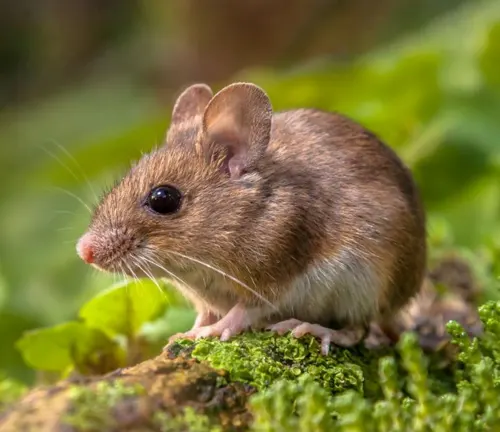
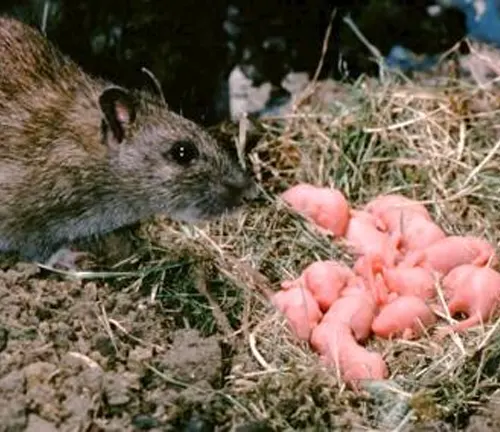
Reproduction
Wood Mice are known for their prolific breeding habits. Females can produce several litters each year, with a typical litter size ranging from four to eight offspring. The reproductive season peaks in spring and summer, aligning with abundant food resources. This high reproductive rate contributes to the Wood Mouse’s ability to colonize various habitats and maintain a stable population.
Behavior
Wood Mice are primarily nocturnal creatures, displaying heightened activity during the night. Their behavior is marked by agility and curiosity, allowing them to forage efficiently for a diverse range of food sources. Despite their small size, Wood Mice are skilled climbers and adept at escaping predators through their swift movements.
Nesting/Denning Cover
Nesting and denning are crucial aspects of the Wood Mouse’s behavior. These rodents construct nests in concealed locations, utilizing grass, leaves, and other materials to create a secure environment for breeding and shelter. The choice of nesting cover varies, with woodlands, fields, and gardens providing suitable locations for these intricately constructed nests.
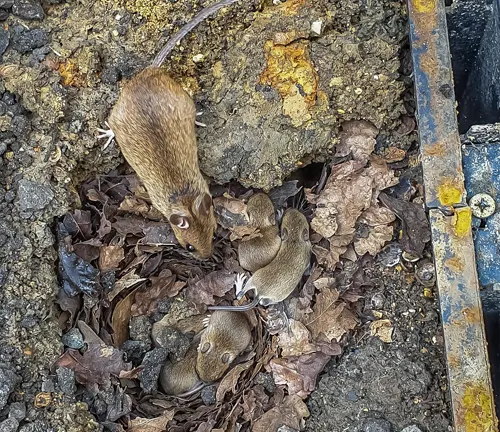
Habitat Preferences
Wood Mice exhibit remarkable adaptability, thriving in different habitats ranging from dense woodlands to open fields and gardens. Their ability to adjust to diverse environments contributes to their widespread distribution and successful colonization of various landscapes.
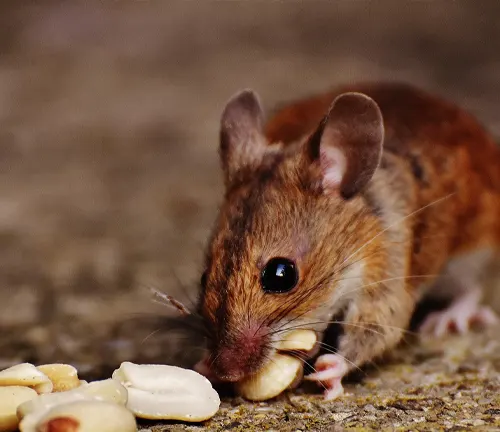
Food Habits
Wood Mice are omnivores with a varied diet. Their food habits include seeds, fruits, insects, and small invertebrates. This adaptability in dietary preferences allows them to capitalize on seasonal changes and ensures a steady food supply throughout the year.
Voice, Sounds, Tracks, and Signs
While Wood Mice are not known for vocalizations, they communicate through a range of sounds, including squeaks and ultrasonic vocalizations that are often imperceptible to the human ear. Tracks and signs, such as small footprints and gnaw marks, serve as indicators of their presence in an area. These subtle cues contribute to our understanding of their behavior and movements within their habitat.
Damage Identification by the Wood Mouse
The Wood Mouse, while small in stature, can leave a significant impact on its surroundings, often leading to various forms of damage. Identifying these signs is crucial for implementing effective control measures and mitigating potential harm.
Damage to Landscapes
One of the noticeable effects of Wood Mouse activity is the alteration of landscapes. These rodents are skilled diggers, creating burrows and tunnels that can disrupt the stability of soil and vegetation. Such modifications to landscapes can affect the aesthetic appeal of gardens and natural areas, impacting the overall ecology of the environment.
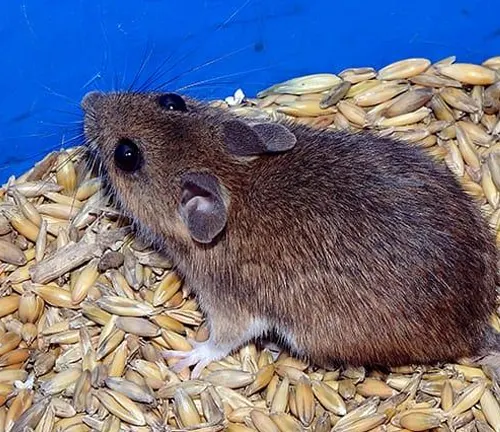
Damage to Crops and Livestock
Wood Mice are notorious for their impact on agriculture, causing damage to crops and posing a threat to livestock. In fields, they may feed on seeds, grains, and young plants, potentially leading to reduced crop yields. Additionally, the presence of Wood Mice can indirectly affect livestock by competing for food resources or by serving as hosts for parasites that can harm domestic animals.
Damage to Structures
Wood Mice, seeking shelter and warmth, often find their way into structures such as homes, sheds, and barns. Once inside, they can cause damage by gnawing on various materials, including insulation, electrical wiring, and wooden structures. This gnawing behavior not only compromises the integrity of buildings but also poses a fire hazard due to the potential damage to electrical systems.
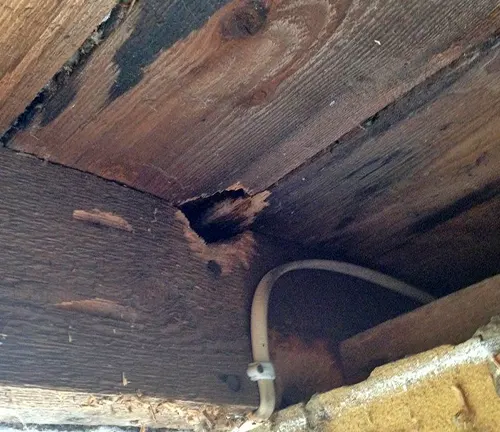
Damage Prevention and Control Methods for Wood Mouse
As charming as Wood Mice may appear, their potential for causing damage to landscapes, crops, and structures necessitates proactive measures for control and prevention. Here, we explore various methods to manage Wood Mouse populations and minimize the impact of their presence.
Habitat Modification
One effective approach to control Wood Mouse populations is through habitat modification. By eliminating or altering factors that attract these rodents, such as removing food sources and sealing entry points to nesting sites, homeowners and farmers can create an environment less conducive to Wood Mouse habitation. Maintaining cleanliness and reducing clutter in and around structures are key components of this preventative strategy.
Exclusion
Exclusion methods focus on preventing Wood Mice from entering structures or specific areas. Sealing cracks, gaps, and openings in buildings with materials like caulk or wire mesh helps keep these rodents at bay. Implementing proper fencing around gardens and crop fields can also serve as a physical barrier, limiting their access to vulnerable areas.


Frightening Devices
Frightening devices leverage stimuli that deter Wood Mice without causing harm. Ultrasonic devices emit high-frequency sounds, often imperceptible to humans, disrupting the rodents’ communication and breeding. Motion-activated lights and sound-emitting devices can also startle and deter Wood Mice, making these gadgets valuable tools in certain settings.
Repellents
Natural and chemical repellents can be employed to discourage Wood Mice from specific areas. Substances like peppermint oil, ammonia, or commercial rodent repellents can be strategically placed to create an unfavorable environment. However, it’s crucial to regularly assess and replenish these repellents, as their effectiveness may diminish over time.

Toxicants
The use of rodenticides or toxic baits is a more aggressive method for Wood Mouse control. However, it requires caution due to potential risks to non-target animals and the environment. Proper placement and adherence to safety guidelines are essential to minimize unintended consequences.
Shooting
In rural and open areas, shooting Wood Mice may be a viable control method. This approach requires skill and precision, and it’s essential to follow local regulations and firearm safety guidelines. While effective in certain situations, shooting may not be practical or safe in more populated or urban settings.
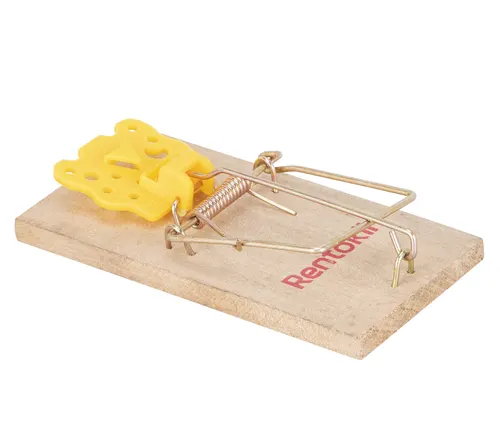
Trapping
Trapping is a humane and targeted method for Wood Mouse control. Various types of traps, including snap traps and live traps, can be strategically placed to capture and remove individual mice. Trapping allows for the relocation of Wood Mice away from sensitive areas without causing harm.
Different Species
Yellow-necked Mouse
(Apodemus flavicollis)
Found in Europe and parts of Asia, the Yellow-necked Mouse is larger than the common house mouse and is recognized by its yellowish-brown fur around the neck.

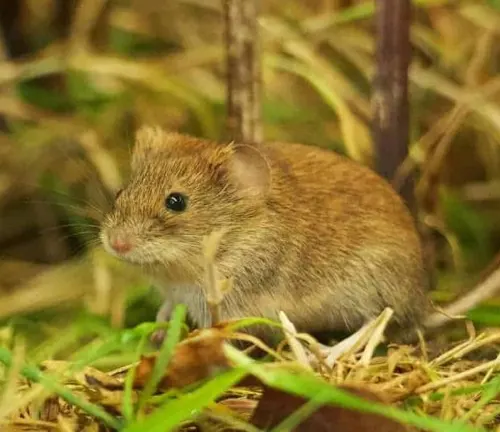
Bank Vole
(Myodes glareolus)
While not a true mouse, the Bank Vole is often associated with woodland habitats. It has a more robust body and shorter tail compared to the Wood Mouse.
Field Vole
(Microtus agrestis)
Another vole species that may be mistakenly identified as a Wood Mouse, the Field Vole is commonly found in grassy and wooded areas.

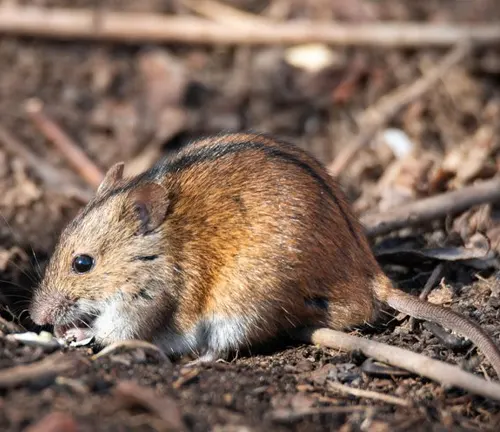
Striped Field Mouse
(Apodemus agrarius)
This species is native to Asia and is characterized by a striped pattern along its back. It prefers a variety of habitats, including forests and agricultural areas.
Algerian Mouse
(Mus spretus)
Native to North Africa and introduced to parts of Europe, the Algerian Mouse is often found in habitats with shrubs and trees.
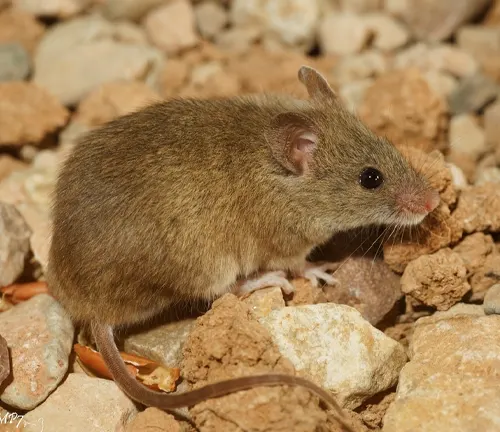
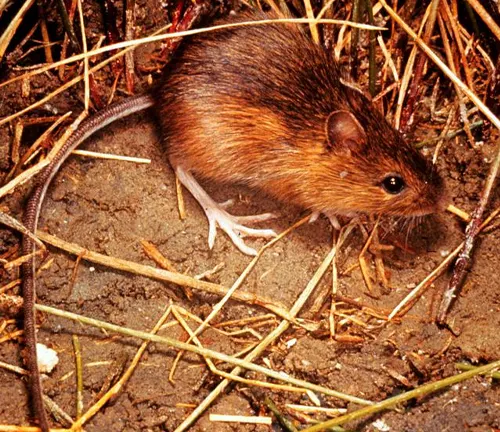
Meadow Jumping Mouse
(Zapus hudsonius)
This North American species is not a true Wood Mouse but is included here due to its habitat overlap. It has long hind legs adapted for jumping and is found in grassy and wooded areas.
Western Harvest Mouse
(Reithrodontomys megalotis)
Found in North America, this mouse inhabits grassy and weedy areas and is known for building globular nests above the ground.

Frequently Asked Questions (FAQs)
1. What is a Wood Mouse?
The Wood Mouse, scientifically known as Apodemus sylvaticus, is a small rodent that belongs to the Muridae family. It is commonly found in woodlands, fields, and gardens across Europe and parts of Asia.
2. How do you identify a Wood Mouse?
Wood Mice are typically small, measuring between 3 to 4 inches in body length, excluding their tails. They have a brownish-grey fur coat, large eyes, and prominent ears. The tail is approximately the same length as the body and is covered in a light layer of fur.
3. What is the reproductive behavior of Wood Mice?
Wood Mice are prolific breeders, with females capable of producing several litters per year. The reproductive season peaks in spring and summer, and a typical litter consists of four to eight offspring.
4. Where do Wood Mice live?
Wood Mice are adaptable creatures that thrive in various habitats, including woodlands, fields, and gardens. They build nests in concealed locations, such as burrows or hidden corners of structures.
5. Do Wood Mice pose any health concerns?
While Wood Mice are not known to transmit diseases directly to humans, their presence can contribute to allergens and respiratory issues, especially for individuals with allergies. Their gnawing habits can also lead to property damage.
6. How can I prevent and control Wood Mouse infestations?
Prevention methods include habitat modification, exclusion by sealing entry points, and maintaining cleanliness. Control methods range from trapping and shooting to the use of repellents and toxicants. Each method has its considerations and effectiveness.
7. Are Wood Mice protected by law?
Generally, Wood Mice are not protected, and pest control measures are often employed in areas where they pose a threat, particularly in agricultural and residential settings.
8. What kind of damage can Wood Mice cause?
Wood Mice can cause damage to landscapes by creating burrows, damage crops and livestock by feeding on seeds and grains, and damage structures by gnawing on various materials. Understanding the types of damage is crucial for effective control.
9. Can I keep a Wood Mouse as a pet?
In many places, keeping a Wood Mouse as a pet may not be legal or advisable. Additionally, wild mice may not adapt well to captivity. If interested in a pet mouse, consider domesticated mouse breeds from reputable sources.
10. Are there different species of Wood Mouse?
Yes, there are different species of Wood Mouse, including the Yellow-necked Mouse, Bank Vole, Striped Field Mouse, Algerian Mouse, and others. These species may vary in size, habitat preferences, and distribution.


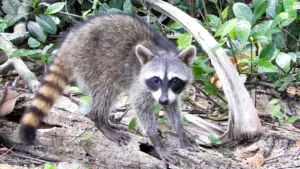

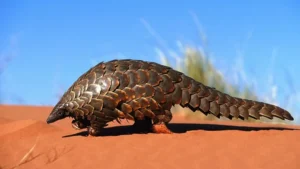
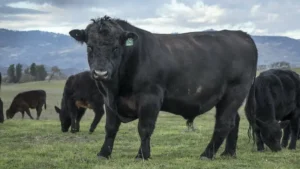
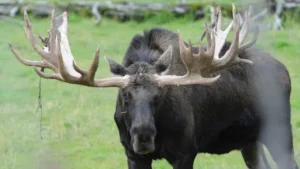

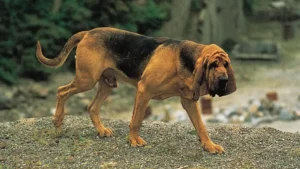
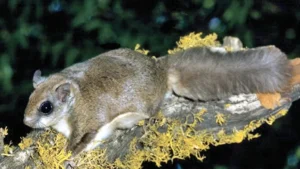

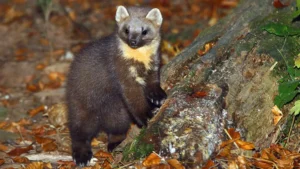


Leave your comment